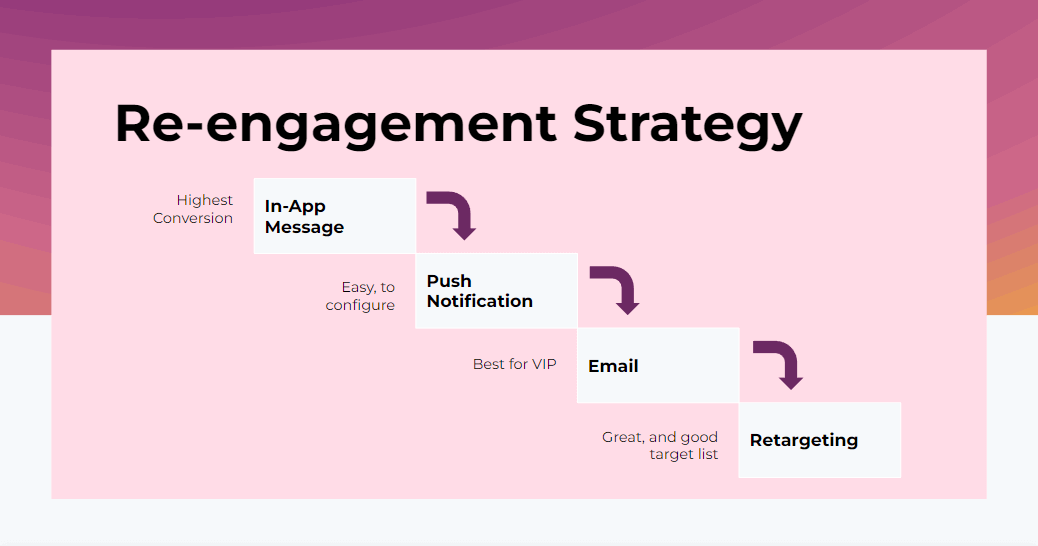BFN Lab: Insights and Innovations
Explore the latest trends and insights in technology, science, and innovation at BFN Lab.
From First Click to Last Play: The Journey of Player Lifecycle Marketing
Discover how to engage players from first click to last play with powerful lifecycle marketing strategies that boost retention and revenue!
Understanding Player Lifecycle Marketing: A Comprehensive Guide
Understanding Player Lifecycle Marketing is essential for game developers and marketers looking to maximize player engagement and retention. At its core, player lifecycle marketing refers to the strategies and practices aimed at guiding players through the various stages of their gaming journey, from awareness to re-engagement. By implementing effective marketing techniques at each stage, developers can ensure that players not only enjoy the game but also remain committed over time. This continuous relationship can lead to increased lifetime value (LTV) and overall success of the game.
To effectively execute player lifecycle marketing, it is crucial to recognize the key phases involved in a player's journey:
- Acquisition: Attracting new players through various channels such as social media, ads, and influencer partnerships.
- Engagement: Keeping players interested in the game with regular updates, events, and personalized communication.
- Retention: Encouraging players to continue playing by providing rewards, in-game bonuses, and timely feedback.
- Re-engagement: Reinviting lapsed players with targeted promotions and updates to reignite their interest.

Counter-Strike is a popular first-person shooter game that has captivated millions of players worldwide. The game emphasizes teamwork and strategy, where players can engage in intense matches. For those interested in betting on their favorite teams, using a betpanda promo code might enhance the experience.
Key Strategies to Enhance Engagement from First Click to Last Play
To enhance engagement and ensure users stay connected from the first click to the last play, it's essential to create a seamless user experience. Start by optimizing your website's loading speed, as a delay can result in high bounce rates. Use analytics tools to monitor user behavior and adjust your content strategy accordingly. Additionally, incorporating compelling visuals and interactive elements can significantly increase user retention. Here are some key tactics:
- Implementing A/B testing to understand what resonates with your audience.
- Utilizing engaging multimedia content such as videos and infographics to capture interest.
- Encouraging user-generated content to build community and foster loyalty.
Once you've captured your audience's attention, the next step is to maintain that momentum through personalized content and consistent communication. Sending personalized email newsletters based on user preferences can keep your audience engaged and informed about your latest offerings. Additionally, utilizing social media platforms effectively can provide a two-way communication channel, encouraging feedback and interaction. Consider implementing the following strategies to enhance ongoing engagement:
Fostering a sense of community by encouraging conversations and discussions within your content ecosystem.
- Regularly updating content to keep it fresh and relevant.
- Utilizing gamification techniques to motivate users to interact more frequently.
How to Optimize Your Marketing Efforts at Every Stage of the Player Journey
To effectively optimize your marketing efforts throughout the various stages of the player journey, it’s essential to understand the unique needs and behaviors of your audience. Begin by identifying the different stages: Awareness, Consideration, Conversion, and Retention. For instance, during the Awareness stage, utilizing content marketing strategies such as engaging blog posts and social media campaigns can help attract potential players. At this point, utilizing SEO techniques like keyword research and optimizing meta descriptions can dramatically increase your visibility and drive organic traffic to your site.
As players move into the Consideration stage, it's vital to provide comprehensive information that highlights the benefits and features of your offerings. Implementing reviews, comparisons, and free trials can enhance user confidence. During the Conversion stage, ensure that your call-to-action (CTA) buttons are clear and compelling, directing users to take the next step easily. Finally, in the Retention phase, focus on building a loyalty program or offering personalized content that keeps players engaged and encourages them to return. By tailoring your marketing strategies at each stage, you can significantly improve your overall effectiveness and maximize player satisfaction.